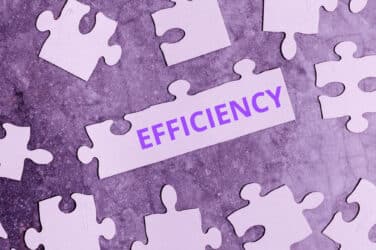
Trade surveillance, like best execution, can be harder to analyse in fixed income markets due to the complexity of instruments, access to data and over-the-counter (OTC) market structure. David Griffiths, director of regulatory affairs at surveillance specialist Eventus, talks to The DESK, a Markets Media Group publication, about how firms can use enhanced surveillance to better manage the costs and complexity involved, and gain material advantages.
The DESK: What are the external drivers for firms to engage in increased surveillance today?
David Griffiths: Firms both large and small are facing challenges in their use of surveillance systems. Larger firms typically carry multiple systems across asset classes and business units, which make it hard to aggregate a single picture of activity. At the same time smaller firms struggle to develop the resources to support effective surveillance.
When that is put into context of external drivers, one must consider that firms in the US have different regulators for different lines of business, sometimes two or three regulators are covering the same firm, and yet the capital markets firm is required to have a single view of activity. From a trade surveillance perspective a sell-side firm might have 20 behaviours that they need to monitor and aggregate. The buy side is likely to need a subset of those captured.
For many of those buy-side firms, surveillance is looked at from a fair-dealing perspective, tackling best execution with a trading abuse angle. Buy-side employees are more likely to get checked up on insider dealing.
The UK’s Financial Conduct Authority (FCA), especially over the past year and a half with COVID, have looked at controls around sharing of information, the information barriers that exist for traditional trading and what they call ‘market soundings’, where portfolio managers declare if they have inside information on a potential debt issuance that is coming along. Market soundings, insider dealing and restricted trading are key.
TD: What do buy-side firms need to consider specifically?
DG: The nature of market abuse for buy-side firms tends to focus on month-end revaluation or valuation periods. Where standard wash trading for a sell side firm needs to be monitored all the time, it is especially pertinent for a buy side around valuation month-end periods. Wash trading also needs to be considered for things like portfolio re-balancing, moving assets from one portfolio or fund to another. There are certain ways to do that.
Over the past year, a number of false alerts have been triggered by people who were rebalancing portfolios but impacting the market. In fixed income markets, which by its nature has limited pricing data and is typically less liquid, it can take just one fund manager engaging in a large block trade to kick off market a flurry of market activity at the point the trade is reported. By comparison, in equities there typically needs to be at least four or five orders to see people heading for the hills.
Market surveillance can support trading in other ways, off-market pricing being another good example; if you are being quoted a price which was relevant last week and you are unsure because you don’t have access to market data, that can create compliance issues. Having surveillance tools to support your access to pricing data is very supportive.
TD: What different characteristics does surveillance for over-the-counter (OTC) have versus surveillance of exchange traded instruments?
DG: The idea that you are working with a trusted broker is even more pertinent in fixed income because of the need for access to good fixed-income market data. Surveillance platforms help in securing that relationship because the surveillance vendor has got a better chance of getting hold of timely market data. It’s been my experience that buy-side firms tend to look at surveillance platforms as a potential investment opportunity for them to get intelligence out of, and to understand, their trading.
It has a good total cost of ownership (TCO) for them in order to be able to help some of their business controls.
In addition, trade execution in fixed income is heavily skewed to request-for-quotes (RFQs) and in the FCA’s MarketWatch 68 report, it specifically noted that some firms struggle to capture order and trade bookings in fixed income and rates products. Firms need to make sure they are not being abusive with their RFQs as well. Price discovery is not as electronic as you get for exchange traded instruments, because you don’t get those feeds and prices are very disparate. People are moving more towards electronic execution but what still doesn’t exist is a place for them to be able to centralise that into a single source where they get to see everything going on. If a big firm is using several trading platforms to execute different fixed income instruments – perhaps one for government bonds, another for investment grade credit and then more manual processes for less liquid assets – it needs a single surveillance source to pull that activity together.
We have risk monitoring as well as a trading surveillance side to help brokers and investment managers build a holistic risk picture of trading rather than just a straightforward trade surveillance platform.
TD: Which types of data formats might represent a trade and what does that create in terms of complexity or potentially cost when aggregating data?
DG: In fixed income you can trade on a multitude of different multilateral trading facilities (MTFs), and also as a pure OTC trade with a primary dealer. A trader might place an order through a standard order management platform, or on an MTF subscribing to a broker’s streaming prices, or posting an electronic RFQ, on the telephone, or through chat. Those different data formats make it challenging for the firms to be able to deal with some of the MiFID requirements around trade reconstruction.
When looking at pure trading, which is relevant for activity that could impact pricing, you are looking a range of different data formats or structures.
To handle FIX and proprietary FIX puts a huge overhead on their internal resources, and if a hedge fund has five staff on payroll, they cannot dedicate a member of staff to deal with all these trading platforms.
Eventus allows traders to focus their skills on delivering alpha, instead of post trade administration and compliance. We are capturing and automating that process without needing the support of a big tech team at the client.
TD: How is primary market activity captured in surveillance?
DG: In equities something will move from being primary to secondary within a space of a couple of hours. But in fixed income you have primary dealers, and pricing in that primary dealer market then sees spread upon spread applied. The further down the food chain you go, the higher the spread is. From a surveillance perspective large sell side firms get a lot of their business in primary trading. Understanding the chain of a transaction is enormously important, when you look at what happened in 2008 [with banks struggling to unwind exposure form OTC trading], tying that activity from broker to investor is hugely important and that’s why you have things like trade reconstruction under MiFID. It all ties back at any point in time to knowing what positions you have, and who the beneficial owner is. There are some behaviours in fixed income that only a regulator is able to detect because they have that single pane of glass on the market. It’s difficult for buy side firms to do that because they are just hitting the prices that they have been offered, rather than being able to control size and shape, and timing. However, we can provide that view across different asset classes, with a low TCO and with limited in-house support, in order to help clients achieve compliance targets, and to ensure they have a clear picture of their trading activity.
TD: What are the barriers to adopting holistic surveillance?
DG: When we look at total cost of ownership (TCO) smaller firms find it more difficult to justify the cost of point solutions to tackle each instrument, or to resource tech skills in-house. Larger firms struggle to get their hands around all the data they need, because they might have four or five different trading platforms. The ability to handle data is key. It is not a big data issue, it is more that complex trade flows, multiple trading platforms and risk platforms require straightforward consolidation and aggregation.







